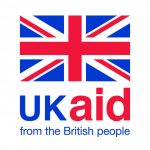As of 2015, every country in the world had at least one social protection programme in place, and the average developing country had about 20 programmes. Social benefit payments, or social cash transfers (SCTs) as they are commonly called, have become an increasingly popular component of these social protection systems in recent years. Yet, some populations continue to experience higher levels of exclusion from social safety net programmes, including SCTs. In many cases, this is due to challenges related to enroling, identifying and communicating with beneficiaries.
As the most ubiquitous technology on the planet, mobile is uniquely positioned to support institutions with these challenges and ensure their target populations can fully participate in these programmes. In order to understand the potential role of mobile in supporting identification and verification of programme beneficiaries in the social cash transfer process, we conducted wide-ranging research in two countries – Kenya and Malawi.
Malawi was selected as a comparison to Kenya, due to the differences in mobile penetration and digitisation levels. While Kenya has high levels of mobile penetration and a relatively tech-savvy population broadly familiar with digital services, including mobile banking, Malawi has much lower levels of mobile penetration, fewer available digital services and a less tech-savvy population. These comparisons allow us to explore the opportunity for MNOs in countries where the target population is at different stages of mobile penetration and digital service engagement.
Through qualitative and quantitative research with more than 540 people across the two countries – including experts from the mobile industry, international development community, and private sector – we identified and explored a range of insights and opportunity areas for mobile. These are briefly summarised below and you can read the full report here.
- Three key factors shape the opportunity for identification and verification services that target SCT beneficiaries or end users:
- The SCT programme, including its size, funding structure and level of digitisation;
- The mobile environment, including mobile and mobile money penetration, and the wider regulatory environment and related policies;
- The identity landscape, including foundational ID coverage and ID policies, systems and registries in the country.
- The most significant challenges and opportunities exist around payment collection and/or the cash-out phase of the SCT process. Despite the differences between programmes, beneficiaries in both countries were experiencing challenges around when and where they could collect their payment (or cash-out) and how their identities were verified at this point.
- MNOs are well positioned to support programme stakeholders in overcoming these challenges through the development of payment platforms that leverage the various attributes they have on their customers, including the customer’s national identity number, SIM registration and KYC data, and mobile phone number. Other mobile services, such as SMS prompts, one-time passwords (OTP), voice or facial recognition, could be introduced to provide higher levels of assurance to the disbursing entity that funds are reaching the intended beneficiary/mobile money user. Additionally, these mobile-enabled verification options could support payment collection (or cash-out) by a proxy in instances where the registered beneficiary is unable to appear in-person.
- SCT and government stakeholders in Kenya and Malawi saw significant value in introducing mobile money payment options for beneficiaries. Verification options that could ensure the intended beneficiary receives the payment were appealing, and remote verification options in general were of interest, particularly voice recognition services, to overcome some of the challenges experienced with using fingerprint scanning and the cost of biometric scanning devices (Kenya).
- MNO stakeholders in Kenya and Malawi also saw significant value in introducing mobile money payment options due to the potential size of the market and the opportunity to increase their user base. Additionally, these stakeholders saw the value in introducing remote verification options that could support them to ensure the intended beneficiary had received the payment. Importantly, MNO stakeholders felt strongly that it would only be in their interest to offer mobile-enabled verification services to SCT programme stakeholders if they were also the payment provider, as this is where they saw the primary commercial opportunity.
- Beneficiaries were broadly interested in verification options that gave them greater flexibility to collect their payments, and greater security if sending a proxy to collect the payment. There was a preference for facial recognition over voice recognition among beneficiaries, although this may have been due to greater familiarity with the concept, particularly in Malawi, and greater confidence in the concept’s security due to perceptions such as “uniqueness” of one’s face versus voice.
The GSMA Digital Identity team is committed to supporting focused research and advocacy work that allows MNOs to bring the benefits of digital identity to the poorest and hardest to reach individuals around the world. If you are a GSMA member, policymaker or development agency seeking to support the identification and verification of programme beneficiaries in the social cash transfer process, and you would like to learn more about this research project please download our report or contact the Digital Identity team at [email protected].



